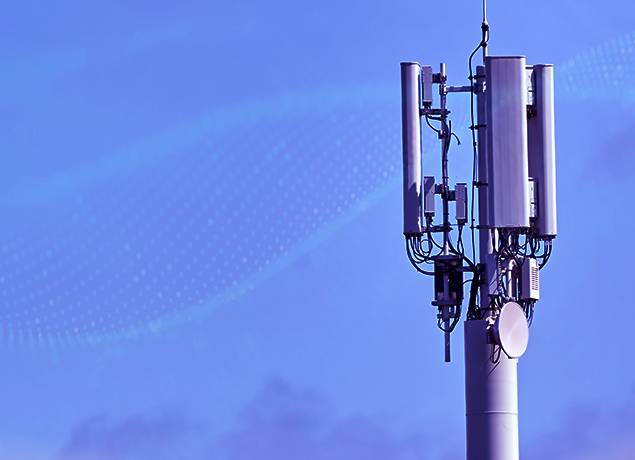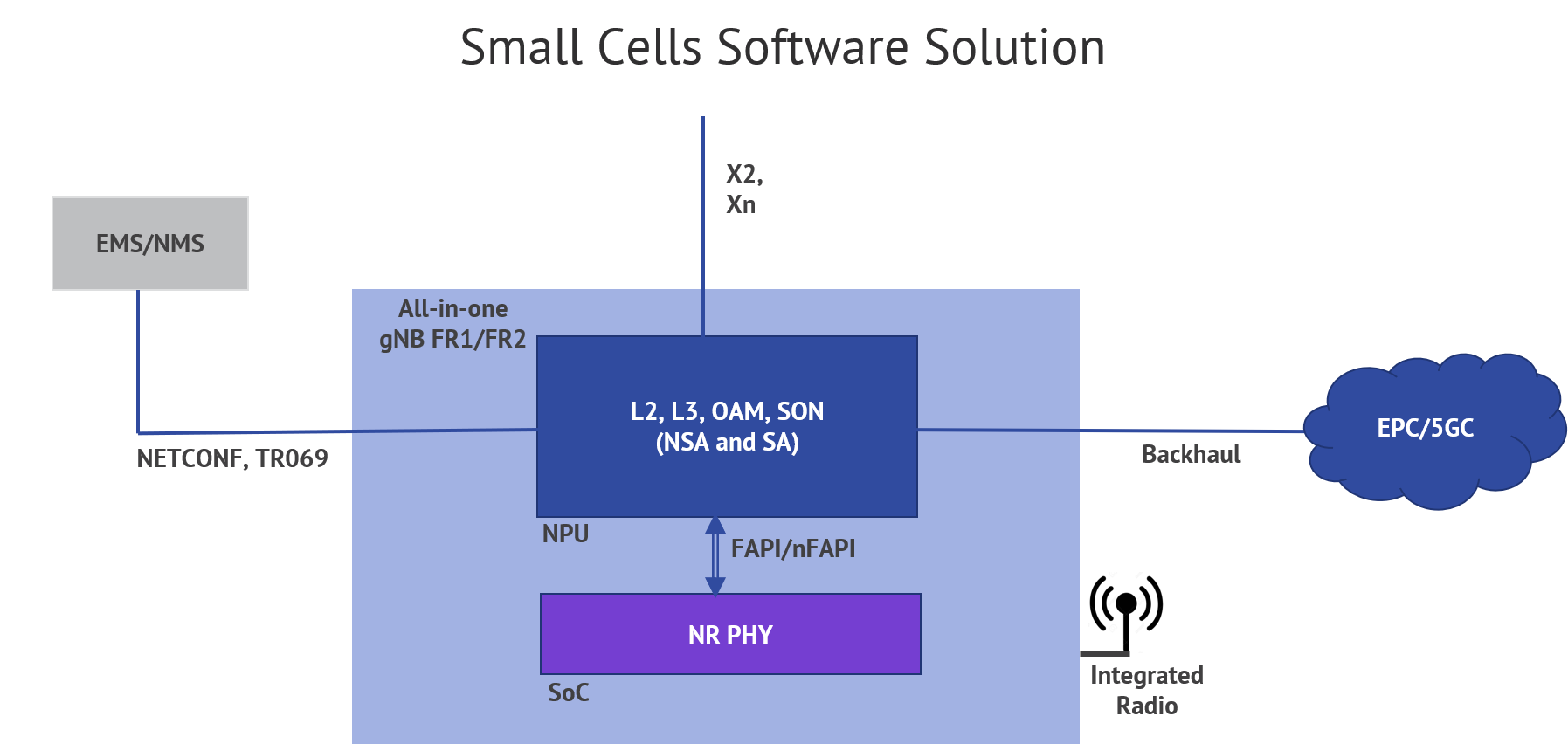- Small cells hardware and software carries a relatively low cost
- Enterprises and public hot-spots can benefit from guaranteed traffic, and therefore revenue
- Cost-sharing with enterprises for fiber, transport, and power
- Underserved areas where Macros do not reach can be targeted
Small Cells Overview
Maximize Your Network Capacity with Small Cells
Small cells are low-power, cost-effective, small form-factor, short-range wireless transmission systems designed to cover small geographical areas both indoors and outdoors. Deployable on a wide range of spectrum bands – including CBRS, C-Band, and mmWave spectrum – small cells can meet a wide range of coverage and capacity requirements.
Small cells are also an ideal solution to enable the exploding Industrial Internet of Things (IIoT), providing connectivity for the billions of new devices that are coming online.

Why Small Cells
Optimize Spectrum Utilization
Network densification and additional spectrum will play a key role in delivering 5G and both will have a significant impact on the economics of delivery. With the increased demand for data and the prevalence of high-bandwidth applications, service providers face tough challenges in achieving increased capacity and meeting quality of services.
Another key advantage for small cell deployments is that it brings analytics closer to the user equipment. By analyzing subscriber traffic and caching content locally and close to the small cell access point, service providers can significantly reduce backhaul traffic and meet the latency requirements of 5G.

Key Benefits
Radisys Protocol Software for Small Cells
Accelerate your 5G Small Cells Rollout
The deployment of small cells and the leap towards Open RAN or disaggregated RAN promises to maximize the spectrum utilization – making networks more intelligent, increasing capacity and coverage, and monetizing enhanced mobile broadband.
Radisys has been a pioneer in small cells market delivering protocol software for 3G, LTE and now 5G NR small cells. With a long experience of enabling many OEMs in field deployment of small cell solutions on different SoC based platforms, Radisys provides unparalleled small cell software expertise.
SCF: Cultivating the Seeds of the Disaggregated RAN
Read Article
Radisys Small Cells Software
Why Radisys
Radisys small cells protocol software supports the latest standards in 3GPP, the O-RAN Alliance, and the Small Cell Forum (SCF). Our solution supports SON to offer full management and control of user data traffic, policy, mobility, and session continuity. Some key features are listed below:
- Support for LTE, 5G NR: NSA and SA
- 4G and 5G NR licensed bands: FR1 and FR2, CBRS-LTE and CBRS-5G
- 3GPP Release 15 Compliant and upgradable to Release 16
- Self Organizing Networks (SON), Automatic Neighbor Relation (ANR) features
- Seamless mobility and interference management
- OAM/EMS integration: NETCONF YANG and TR069
Through our strong collaboration with industry partners providing small cell SoC platforms and PHY layer software, we ensure that our small cells software delivers the best uplink and downlink data throughput and other services with optimized CPU usage for indoor and outdoor use cases.
Radisys provides 5G NR NSA and SA small cells software for both FR1 and FR2 bands on different SoC based small cell platforms. We deliver a fully integrated software package, with customizable L2/L3 implementation to suit deployment needs. We provide CBRS small cells solutions for both LTE and 5G NR with SAS agent or domain proxy-based integration with SAS servers.
SCF: Cultivating the Seeds of the Disaggregated RAN
Read Article
Key Benefits

The Business Case for Small Cells
Low Cost 4G/5G for New Uses Cases
Alternative to Macro
- Small cells are in good harmony with Macro
- Co-exist with existing network in shared or dedicated spectrum, multi-RAT, multi-vendor interoperable
- Multi-topology support: Support for both outdoor and indoor small cells deployment options
- Plug and play and automation ease the time to market
Short Return on Investment
- Macro offload, Wi-Fi offload
- Low-cost fiber, mmW based backhaul, and multiple cost-sharing models
